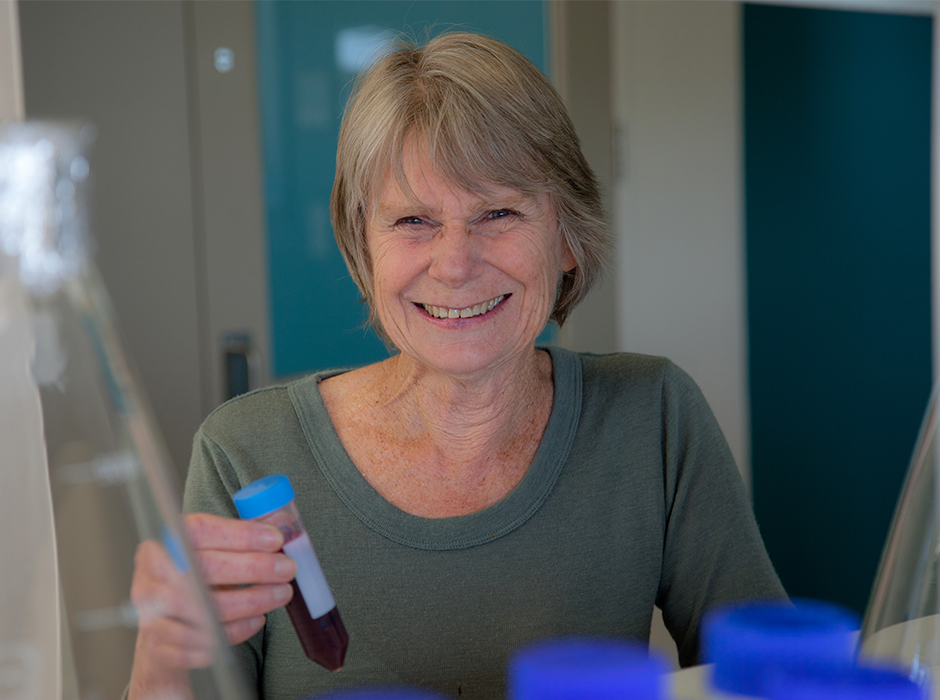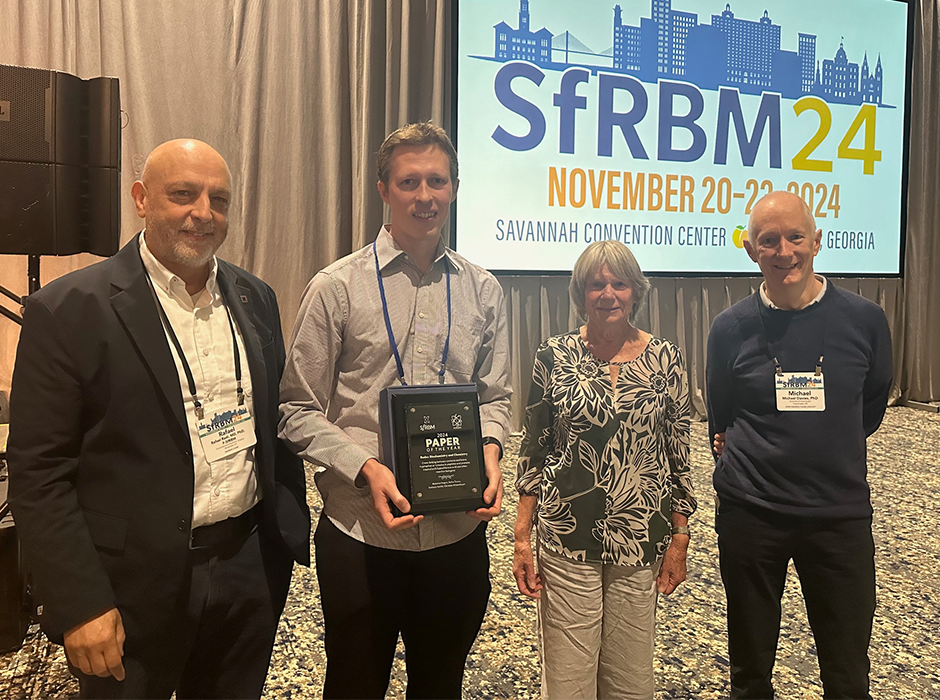
Christchurch Professor Christine Winterbourn (ONZM, CNZM) is the first researcher in Australasia to be chosen for the Society for Redox Biology and Medicine’s (SfRBM) prestigious Lifetime Achievement Award.
Esteemed University of Otago, Christchurch Professor Christine Winterbourn (ONZM, CNZM) has been recognised by her scientific peers yet again, with a lifetime achievement award from one of the world’s leading medical research societies.
Christine, a Principal Investigator with Mātai Hāora – The Centre for Redox Biology in the campus’s Department of Pathology and Biomedical Science, is the first researcher in Australasia (and only the third outside North or South America) to be chosen for the Society for Redox Biology and Medicine’s (SfRBM) prestigious Lifetime Achievement Award.
The award, given every two years, was presented to Christine at the SfRBM’s 31st annual conference in Savannah, Georgia late last month.
“I’m delighted to receive this award,” Christine says.
“It's a real honour to join previous recipients who have been trail blazers in my research field.”
This is the latest in a string of accolades recognising Christine as an international leader in the fields of biological chemistry and free radical research.
She has already received the top awards from each of New Zealand’s two top science bodies, the Royal Society Te Apārangi's prestigious Rutherford Medal (the first woman to do so) and the Marsden Medal. She has also received University of Otago Distinguished Research Medal, as well as the international Society for Free Radical Research’s Trevor Slater Medal.
Christine says she’s indebted to her colleagues and the people who she’s worked with over the course of her extraordinary career – a career responsible for establishing UOC as a centre for free radical research, first arriving as a young post-doctoral scientist in 1970, four years prior to the then-Christchurch School of Medicine being established.
“I’ve been fortunate to have worked in a supportive and stimulating research group and the award would not have come about without them,” she says.
“Mātai Hāora, under its various names, has been a strength at UOC for many years. This award is not only a mark of the international standing of our group as leaders in our field but helps give our publications a profile and serves as a stepping stone in recognising the work of our students and emerging researchers.”
The Lifetime Achievement award win saw Christine invited to present a featured lecture at the recent Georgia conference, which she used as an opportunity to discuss some of the career milestones that have influenced her thinking along with findings which have contributed to the direction of the free radical research field.
“I have been part of this field since the early days and seen its expansion from what was initially considered an esoteric topic to a discipline that impacts upon a multitude of aspects of cell biology and disease pathology,” Christine says.
“With the initial impetus largely being the discovery that all cells contain an enzyme that breaks down superoxide radicals, we started with a strong focus on superoxide and understanding the threats of free radical exposure to life. Since then, the field has expanded to cover a wider range of radical and non-radical oxidants, and it is now appreciated that redox biology is important in physiology and pathology as well as toxicology.”
Christine’s work has been focussed on fundamental aspects of how free radicals are produced, what reactions they undergo and the antioxidant systems that protect against them.
She is currently working with both Mātai Hāora and international collaborators on two projects.
“In one, we are exploring how cell signalling is controlled by an important class of antioxidant proteins that we have studied for many years, while in the other, we are following up on a novel mechanism we identified whereby hydrogen peroxide interacts with CO2 to regulate whether cells use glucose for energy or for processes that protect against and repair damage when they are exposed to stress,” she explains.
“We hope that by characterising these cell signalling mechanisms, our findings will lead to ways of protecting against the adverse effects of uncontrolled growth, stress or inflammation.”

Dr Nick Magon (second from left) and Professor Christine Winterbourn (second from right), alongside 'Redox Biochemistry and Chemistry' journal editors Professor Rafael Radi (left) and Professor Michael Davies (right).
Research Fellow Dr Nick Magon and three other members of the Mātai Hāora team were also recognised at the SfRBM conference, receiving the paper of the year award from the international journal Redox Biochemistry and Chemistry, for their work titled: Cross-linking between cysteine and lysine, tryptophan or tyrosine in peptides and proteins treated with hypochlorous acid and other reactive halogens.
First author Nick presented the work and received the award on behalf of co-authors Christine, Professor Tony Kettle and Dr Rufus Turner.
“This paper was a long time in the making and it’s fantastic to not only be recognised for it, but to be recognised internationally,” Nick says.
He is about to start a new project investigating urinary biomarkers in patients with inflammatory bowel disease, in the hope of developing new ways to detect and monitor disease activity.